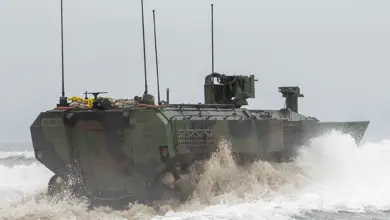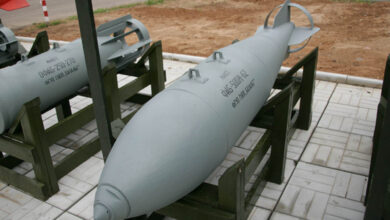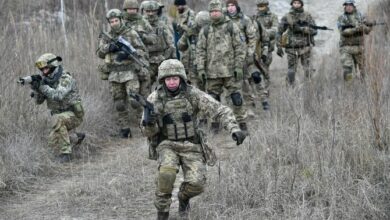
Beginning in 2021, Russia will chair the Arctic Council, an intergovernmental organization aiming to provide a forum dedicated to discussing issues specific to the Arctic and nearby nations.
With this comes questions of what, exactly, Russia aims to achieve during its tenure and how the United States will respond in turn.
One of Moscow’s standing policy positions on the Council has been to advance its goals of economically developing shipping routes through Arctic waters. While presidents and prime ministers may change, this goal has remained constant. In reference to its upcoming chairmanship, Russia has reaffirmed its commitment to economic development in the region.
However, there are indicators that a more aggressive policy may be in the works, with Dmitry Medvedev, a former president and prime minister, stating that Russia will incorporate national security interests into its tenure.
This directly contradicts the Arctic Council’s founding document, the Ottawa Declaration, which clearly states that the Council should not concern itself with national security matters.
Indeed, Washington has also raised concerns among member states about the Council’s militarization, with Secretary of State Mike Pompeo giving a speech in Finland in 2019 focused extensively on security concerns and how the Council should address them.
US Lags Far Behind
Yet while America has made little of its heightened rhetoric over the north, Russia has not been as idle.
Even as far back as 2007, Russia staged a submarine expedition to plant its flag on the north pole’s ocean floor. The goal was to lay claim to the Lomonosov Ridge — a massive suboceanic mountain range that spans the breadth of the Arctic Ocean, bisecting it into two basins.
While Russia has not successfully made its claim to the international community at large, the Kremlin’s continued interest indicates the government sees this as a key issue.
Russia stakes Arctic claim: plants titanium flag on sea floor below North Pole #climateroundup http://t.co/4hAbDv5HxZ pic.twitter.com/TZS3pEfWIm
— Unearthed (@UE) August 5, 2015
In addition, Moscow has been hard at work to expand its active presence in the region, as evidenced by the relatively recent launch of new icebreakers, many of which are nuclear-powered. This contrasts greatly with America’s anemic fleet of two icebreakers compared to Russia’s several dozen.
Even with the US Polar Security Cutter program, Washington still lags far behind, both in quantity and quality, permitting Russia a virtual monopoly on naval presence in the region.
Moscow’s strategy up to this point has been to utilize a provision of the United Nations Convention of the Law of the Sea (UNCLOS) to try to claim the Lomonosov Ridge as an extension of its continental shelf. This would then entitle the country to claim an extended maritime border centered on the ridge, granting it economic rights over the development of any potential resources there.
However, both Canada and Denmark have raised similar geologic claims, arguing that the ridge is an extension of Ellesmere Island and Greenland, respectively. For Russia, this complicated situation presents an advantage, as the overlapping Danish and Canadian claims stir up disputes between two traditional allies, leaving the Russian claim with less direct attention.
Carrots and Sticks
While the Arctic Council’s chairmanship has little executive power over other members, it can set the agenda for meetings, deciding which issues the Council will address. Two uses of this power are of particular note, with one being more overt while the other is more subtle.
Firstly, Moscow could take the most aggressive approach possible and work to use its forthcoming chairmanship to stonewall other proceedings while extracting concessions from Ottawa and Copenhagen.
This would effectively paralyze the Council as long as the Kremlin doesn’t get its way. While certainly divisive, such a strategy could work, and at the very least make a diplomatic show of force of how committed Russia is to its ambitions.
Indeed, coupled with recent concerns about the militarization of the Russian icebreaker fleet, this approach could see Moscow successfully bullying the others into caving to Russian demands.

The other far more likely — and far less controversial — approach would be for Russia to use the chairmanship to encourage discussion centered around economic development in the high Arctic.
These talks would likely be nominally neutral and largely uncontroversial. After all, many countries on the Council hold an active interest in hammering out details for economic and maritime development in the region, especially as the ice grows thinner with each passing summer.
Doing this would permit Russia to tacitly develop the Lomonosov Ridge areas nearest to its shores, especially if valuable mineral deposits were discovered. If Russia achieved this, its claim to the region is bolstered through its ownership rapidly becoming a de facto reality.
Indeed, Russia’s proposed expansion of its Arctic trade route would benefit immensely from such an approach. With plans calling for cargo capacity to reach 80 million tons of freight by 2024, major development is needed since less than half that amount was shipped through the region in 2020.
A call for development would hardly seem out of place in the Arctic Council, allowing for the Kremlin to advance both its territorial and economic ambitions in one fell swoop — all under the auspices of international cooperation and diplomacy.
America the Mediator?
For the United States, these actions could prove distinctively disadvantageous if not handled appropriately. While currently difficult to navigate, the growing impact of climate change will radically change the frozen north, leaving Arctic waters as valuable territory for global commerce.
Ensuring the equal access of Arctic nations to this new frontier is a matter of national interest for the US, given its ownership of territory through Alaska. To this end, Washington should take on the role of mediator, working toward a compromise that can benefit all parties while also preventing any single nation from monopolizing so large a piece of Earth’s northern waters.
There are three components to this strategy.
First, the US should leverage its own membership on the Arctic Council to encourage Russia’s potential efforts at stimulating economic activity in the region. While this may seem self-harming given Russia’s interest in doing as much, mutual development by multiple parties would deny Russia the option of attempting to claim the Lomonosov Ridge through de facto ownership.
If countries other than Russia can develop in their claimed waters and thereby build their own cases for laying claim to the ridge, this would stymie Russian efforts and create the need for a neutral mediator. The US would then be primed to fulfill this role, given its own renunciation of any regional claim.

Furthermore, the US could then use this newfound role and broker a compromise between the Canadian and Danish claims. Given that both nations are reliable long-time allies, such an endeavor should be quite manageable. Moreover, the very effort of publicly bolstering and promoting cooperation would doubtlessly play well in the international community.
If that vital second step could be achieved, Washington could implement this strategy’s final component: supporting one of its allies’ claims to the Lomonosov Ridge under UNCLOS. This could open the way for said allied nation to claim the ridge or work out a compromise claim with Russia, giving both sides partial ownership.
In either scenario, the US can, in a roundabout way, use Russia’s chairmanship on the Arctic Council to its own advantage, using it both to stifle Moscow’s ambitions in the name of international cooperation and secure stronger ties with American allies.
For the incoming Biden administration, this strategy would address a vital US security concern, assure free and fair economic development of the Arctic, and give the administration a diplomatic win while simultaneously curtailing Russia’s potentially disruptive ambitions.
If fully implemented, the plan could end a longstanding problem and ensure peaceful cooperation in the region for decades to come.
 Brandon Walls is an undergraduate at the University of California, Davis.
Brandon Walls is an undergraduate at the University of California, Davis.
Disclaimer: The views and opinions expressed here are those of the author and do not necessarily reflect the editorial position of The Defense Post.
The Defense Post aims to publish a wide range of high-quality opinion and analysis from a diverse array of people – do you want to send us yours? Click here to submit an op-ed.










